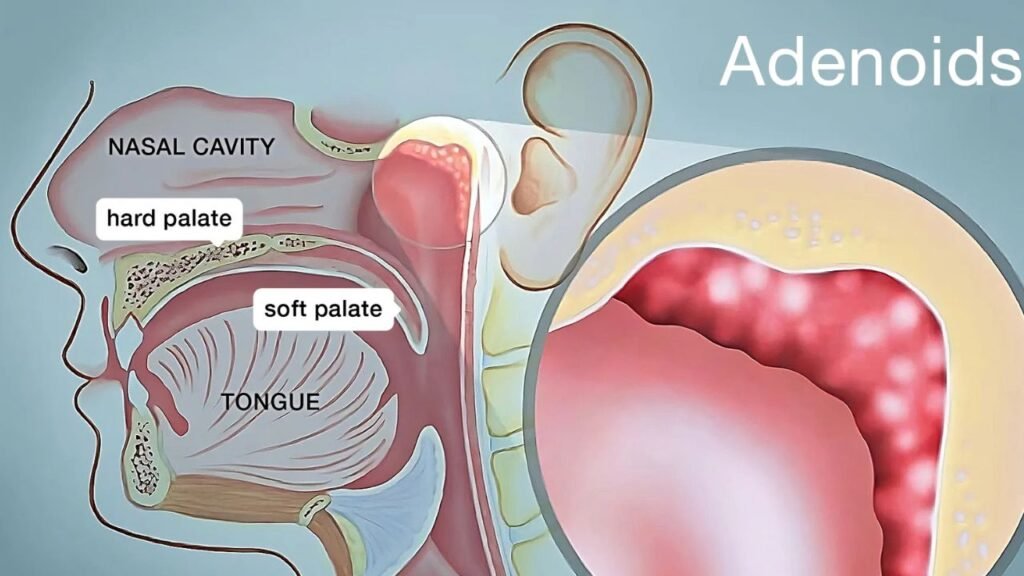Introduction to Adenoids
Adenoids might not be a topic that comes up in everyday conversation, but they play a crucial role in our health—especially for children. Nestled at the back of the nasal cavity, these little glands are often overshadowed by more familiar terms like tonsils. Yet, when things go awry with adenoids, it can lead to discomfort and other health issues. If you’ve noticed your child snoring or struggling to breathe through their nose, understanding adenoids could be key to restoring harmony to their well-being.
Let’s dive into everything you need to know about adenoids—their functions, how they can become problematic, and what steps you can take if they do. This knowledge is essential for both parents and individuals curious about their own health. Get ready for an informative journey into the world of adenoids!
What Are Adenoids and What Do They Do?
Adenoids are small masses of lymphatic tissue located at the back of your nasal cavity, just above the roof of your mouth. They play a critical role in the immune system, especially during childhood.
Their primary function is to trap germs that enter through the nose and mouth. By doing this, they help prevent infections from spreading into the respiratory system.
When children breathe in bacteria or viruses, adenoids act like a filter. They produce antibodies to combat these invaders, contributing to overall health.
As kids grow older, adenoids typically shrink in size. In many cases, they become less significant as other defense mechanisms take over.
However, enlarged adenoids can lead to issues such as difficulty breathing or chronic infections. Understanding their role helps parents recognize when medical advice might be necessary for their children’s well-being.
Common Symptoms of Enlarged Adenoids
Enlarged adenoids can lead to a variety of noticeable symptoms. One common sign is persistent nasal congestion. This can make breathing through the nose difficult, often resulting in mouth breathing.
Children with enlarged adenoids might also experience frequent ear infections. The blockage caused by swollen tissue can trap fluid in the middle ear, leading to discomfort and potential hearing issues.
Sleep disturbances are another concern. Snoring or restless sleep may indicate that the airways are partially obstructed during rest.
Additionally, some children exhibit signs of chronic sinusitis due to inflammation around their sinuses. Symptoms like facial pain or pressure could arise alongside nasal discharge.
It’s essential for parents to be vigilant about these signs, as they can impact a child’s overall health and well-being significantly.
Causes of Enlarged Adenoids
Enlarged adenoids can arise from various factors. One common cause is repeated infections. Children, in particular, are prone to colds and throat infections that can lead to inflammation of the adenoid tissue.
Allergies also play a significant role. Exposure to allergens like pollen, dust mites, or pet dander can trigger an immune response, causing the adenoids to swell over time.
Genetics may contribute too. A family history of respiratory issues could increase the likelihood of enlarged adenoids in children.
Environmental irritants such as smoke or pollution further exacerbate this condition. These irritants constantly inflame the tissues surrounding the airways, including the adenoids.
In some cases, chronic sinusitis can be a contributing factor. Persistent sinus issues often lead to ongoing swelling and discomfort in adjoining areas like the nasal passages and throat.
How Are Enlarged Adenoids Diagnosed?
Diagnosing enlarged adenoids typically starts with a thorough medical history. Doctors will ask about symptoms like difficulty breathing, frequent ear infections, or nasal congestion.
A physical examination often follows. The doctor may look inside the mouth and throat using a light to assess the size of the adenoids indirectly. In some cases, they might refer patients for imaging tests such as X-rays or CT scans. These images provide detailed views of the adenoid tissue.
Sometimes, an endoscopy is performed for direct visualization. This involves inserting a thin tube with a camera through the nose to see how large the adenoids are.
Combining observations from various methods leads to an accurate diagnosis, ensuring that any treatment plan addresses specific needs effectively.
Treatment Options for Enlarged Adenoids
Treatment for enlarged adenoids often begins with conservative approaches. Doctors may recommend watchful waiting, especially if symptoms are mild and not affecting daily life.
Medications can also help manage discomfort. Over-the-counter pain relievers or decongestants might ease breathing issues. In some cases, antibiotics are prescribed if an infection is present.
If these methods do not provide relief, surgical options come into play. Adenoidectomy is the procedure where the adenoids are removed entirely. This surgery is typically safe and effective for children experiencing significant respiratory problems or recurrent infections.
Post-surgery, recovery usually involves managing pain and monitoring any changes in breathing patterns. Regular check-ups ensure everything heals properly as your child adjusts to life without their adenoids.
Post-Treatment Care and Recovery
After the treatment for enlarged adenoids, proper care is crucial to ensure a smooth recovery. Encourage your child to rest and take it easy for at least a week. Activity should be limited to prevent any unnecessary strain.
Hydration plays an essential role in healing. Offer plenty of fluids like water and clear soups. These can help soothe the throat as well.
Soft foods are ideal during this period. Think mashed potatoes, yogurt, or applesauce—anything that’s gentle on the palate.
Watch for signs of discomfort or complications such as fever or excessive bleeding. If these occur, reach out to your healthcare provider promptly.
Maintaining a calm environment will also aid in recovery; keep noise levels down and minimize stressors around them while they heal.
Prevention Tips for Healthy Adenoids
Maintaining healthy adenoids is essential for overall well-being. One of the best ways to promote their health is through good hygiene practices. Encourage regular handwashing, especially during cold and flu seasons.
A balanced diet rich in fruits and vegetables can also support immune function. Nutrients like vitamins A and C are particularly beneficial for maintaining tissue health.
Additionally, ensure your child stays hydrated. Proper hydration helps keep mucous membranes moist, which may prevent infections that could lead to enlarged adenoids.
Encouraging outdoor playtime can strengthen immunity as well. Fresh air and physical activity boost overall health while reducing exposure to indoor allergens.
Minimizing exposure to tobacco smoke is crucial. Secondhand smoke can irritate respiratory tissues and contribute to adenoid problems over time.
When to Consult a Doctor
If you notice persistent snoring in your child, it may be time to seek medical advice. This could indicate enlarged adenoids affecting their airflow during sleep.
Frequent respiratory infections are another red flag. If colds and sinus infections seem too common, an evaluation might be in order.
Watch for behavioral changes or difficulties concentrating at school. These issues can sometimes stem from disrupted sleep due to breathing problems linked with adenoid enlargement.
Additionally, if you observe any difficulty swallowing or noticeable changes in speech patterns, contacting a healthcare provider is essential.
Don’t hesitate to reach out if your child experiences chronic ear pain or recurrent ear infections; this can also be related to adenoid health. Your child’s well-being should always come first; getting the right guidance can make all the difference.
Conclusion
Understanding adenoids is essential for both parents and individuals. These small glands play a significant role in our immune system, particularly during childhood. However, enlarged adenoids can lead to various health issues that may require attention.
Recognizing the symptoms of enlarged adenoids early on can make a difference. From chronic nasal congestion to sleep disturbances, being aware of these signs helps you take timely action. Understanding the common causes can also assist in prevention and management strategies.
Diagnosis typically involves physical examinations and sometimes imaging tests. If your child or you experience persistent issues related to breathing or infections, consulting with a healthcare provider is crucial for appropriate evaluation.
Fortunately, several treatment options are available depending on the severity of the condition. Surgical intervention might be necessary for more severe cases but there are also non-invasive measures that can provide relief.






